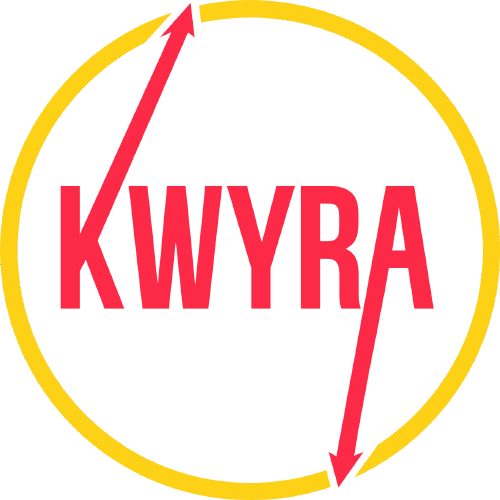Now, that we have an understanding of what unearned revenue, debit, and credit are in financial reporting, we can now answer the question ‘is unearned revenue debit or credit? The U.S. Securities and Exchange Commission (SEC) has established several criteria that a public company must meet to recognize revenue. While manual closing entries are foundational to understanding accounting principles, most modern businesses use software to streamline this process. The total expenses are calculated and transferred to the income summary account.
Unearned Revenue Journal Entry
The company can make the unearned revenue journal entry by debiting the cash account and crediting the unearned revenue account. Closing entries represent a crucial step in the accounting cycle – the standardized sequence of accounting procedures used to record, classify, and summarize financial information. Within this cycle, closing entries come after preparing financial statements and before creating a post-closing trial balance. They bridge the gap between one accounting period and the next, ensuring that temporary accounts start fresh while permanent accounts carry forward their ending balances. It must be a skill learned by those preparing the organization’s financial reports, as negative repercussions can occur if they are not placed in the right accounts. In terms of goods, the unearned revenue is when the money for the goods has been paid, but the goods have not been delivered to the customer.
Unearned revenue, sometimes called deferred revenue, is when you receive payment now for services that you will provide at some point in the future. If a business entered unearned revenue as an asset instead of a liability, then its total profit would be overstated in this accounting period. The accounting period were the revenue is actually earned will then be understated in terms of profit. In the double-entry accounting system, a debit and credit entry is used to record any and all transactions within a business’s chart of accounts.
- Such an unearned revenue example can be beneficial to the company in the sense that the early receipt of cash flow can be used for business activities like paying interest on debt and purchasing more inventory.
- This $2,000 is now what is recognized as the monthly earned revenue over time.
- Securities and Exchange Commission (SEC) that a public company must meet to recognize revenue.
- The seller tends to have the cash to perform the required services that have been paid for.
- Later, you will make the necessary adjusting journal entries once you recognize part of or the entire prepaid revenue amount.
This helps finance teams maintain compliance and focus on higher-level financial strategy rather than fixing accounting errors. For example, after three months, the company would have recognized $3,000 in revenue and still hold $9,000 in unearned revenue. These adjustments ensure financial statements accurately represent the company’s revenue and obligations.
Step 3: Close Income Summary Account
This journal entry shows that the business has an influx of cash but the cash has been earned on credit. That is, the cash is a pre-payment on goods to be delivered or services to be provided later. In accounting, unearned revenue is treated as a liability and not as an asset or revenue, as some people might think. This is because it is the money paid to a business in advance before the business actually delivers the goods or services to the customer. Hence, the business owes the customer and is obligated to deliver the goods or service at a later date.
Unearned Revenue Recognition
- Media companies like magazine publishers often generate unearned revenue as a result of their business models.
- Now, that we have an understanding of what unearned revenue, debit, and credit are in financial reporting, we can now answer the question ‘is unearned revenue debit or credit?
- However, even smaller companies can benefit from the added rules provided in the accrual system, so you may want to voluntarily work with accrual accounting from the start.
- The owner then decides to record the accrued revenue earned on a monthly basis.
Earned revenue means you have provided the goods or services and therefore have met your obligations in the purchase contract. Regardless of size or structure, closing entries are essential for accurate period-to-period financial reporting. To summarize, unearned income is an asset the firm obtains with a counter obligation of service to be performed or commodities to be provided for it to be earned entirely. Usually, the cash accounting method is only used by small businesses and sole proprietors.
A typical unearned revenue example to explain this would be professional fees of $12,000 that was received for six months. In order to calculate the unearned revenue that will be earned for a month, the $12,000 unearned revenue is divided by the 6 months, which will give us $2,000. This $2,000 is now what is recognized as the monthly earned revenue over time. When prepayment is made to cover a certain number of months, as time passes and months go by, a certain amount of unearned revenue is earned.
Double Entry Bookkeeping
Under this, the exchange happens before actual goods or service delivery, and as such, no revenue is recorded by the company. The company, however, is under an obligation to provide the goods or render the service, as the case may be, on due dates for which advance payment has been received by it. As such, the Unearned Revenue is a Liability till the time it doesn’t completely fulfill the same, and the amount gets reduced proportionally as the business is providing the service. It is also known by the name of Unearned Income, Deferred Revenue, and Deferred Income as well. When a business receives an advance payment, it must classify the amount as unearned revenue under liabilities, not income or asset. The payment represents a company’s obligation to deliver a product or service in the future.
The unearned amount also ends up on the organization’s statement of financial position under the current liabilities section. In this journal entry, the $4,500 is recorded as a liability because the company ABC Ltd. has the performance obligation to provide the service to its client in the next three months. Likewise, both asset (cash) and liability (unearned service revenue) increase by $4,500 on June 29, 2020. Subscription-based companies rely on unearned income to maintain steady cash flow and invest in product improvements. Since over 83% of adults in the U.S. use at least one subscription service, businesses in this space must carefully track and manage deferred revenue to ensure accurate financial reporting.
Unearned Revenue Reporting Requirements
Later on, once the individual or company actually provides the goods or services, an adjusting journal entry will be made. As the individual or company earns the revenue, it reduces the balance in the unearned revenue account with a debit entry and then increases the balance in the revenue account with a credit entry. That is, the unearned revenue account will be debited and the service revenues account will be credited by the same amount. Until then, the unearned revenue account is usually classified as a current liability on the balance sheet. Businesses can profit greatly from customers paying in advance to receive their products or services.
Sometimes you are paid for goods or services before you provide those services to your customer. Under the accrual basis of accounting, revenues should be recognized in the period they are earned, regardless of when the payment is received. A variation on the revenue recognition approach noted in the preceding example is to recognize unearned revenue when there is evidence of actual usage. For example, Western Plowing might have instead elected to recognize the unearned revenue based on the assumption that it will plow for ABC 20 times over the course of the winter.
How to Calculate Unearned Revenue: Accrual vs. Cash Accounting
Classic examples include rent payments made in advance, prepaid insurance, legal retainers, airline tickets, prepayment for newspaper subscriptions, and annual prepayment for the use of software. After transferring all revenues and expenses, close the income summary account by crediting income summary to retained earnings. Debit income summary to zero out the account, transferring the balances from revenue and expense accounts. This moves the net income or loss for the period to the permanent equity section of the balance sheet by debiting the income summary and crediting retained earnings. An annual subscription for software licenses is an unearned revenue example.
Explore how SolveXia’s automation solutions can transform your closing process and elevate your financial operations to the next level. In this section, we’ll take a deeper look at how unearned income is recorded under the accrual accounting principle. Unearned revenue represents a business liability that goes into the current liability section of the business’ balance sheet. In the case of accounts receivable, the remaining obligation is for the customer to fulfill their obligation to make the cash payment to the company in order to complete the transaction.
In accounting, when a transaction is recorded, a debit entry must have a corresponding credit entry that equals the same amount. That is, in bookkeeping, every transaction has to be exchanged for something else that has the exact same value. Therefore, the total of the debit and credit entries for any transaction must always equal each other so that these transactions are said to be in balance.
Unearned revenue is first recorded as a debit to the cash account and a credit to the unearned revenue account in the books. As is customary in double-entry bookkeeping, the credit and debit are the same amount. Unearned revenue is only recognized whenever a company has a contract with a client that necessitates the provision of a certain product or service.
Businesses make revenue from the sale of their goods or from providing services to their clients. Nevertheless, there are situations whereby a customer pays for a good or service in advance. In such an instance, the company has made revenue from this transaction but hasn’t earned it yet because the goods or services that were paid for haven’t been delivered to the customer.
There is also another entry for the inventory taken out of the organization or the inventory used to perform the service for the customer. These amounts need to be updated on the statement of financial position and the income statement. The way that most organizations work is that they apply either a cash is unearned revenue debit or credit or accrual basis of accounting.



